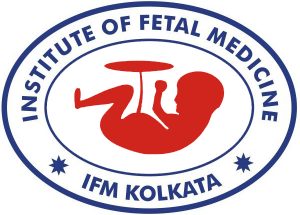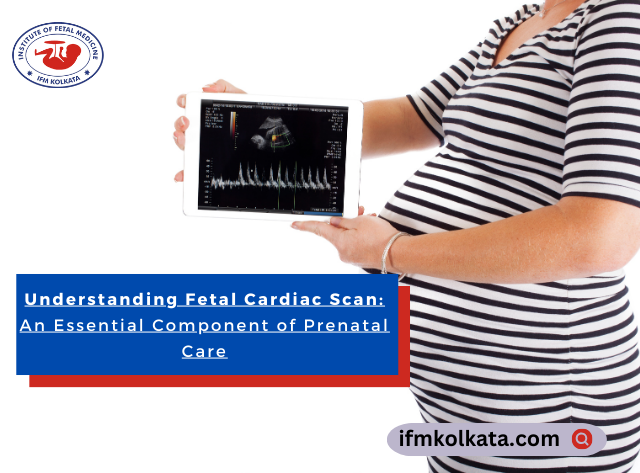trực tiếp bóng đá ngày hôm nay
Chào mừng bạn đến với https://rikbet.com/, nơi mà thế giới giải trí và trò chơi điện tử hoà cược quyện thành những trải nghiệm hấp dẫn và thú vị. Bài viết này sẽ mang đến cho bạn cái nhìn sâu sắc về cách mà nền tảng này hoạt động, cũng như những điều gì mà nó có thể cung cấp cho bạn.
1. Đặc Điểm Nổi Bật Của https://rikbet.com/

Tại https://rikbet.com/, cộng đồng người dùng sẽ được đắm chìm trong một không gian đầy màu sắc và sự sáng tạo. Được thiết kế để phục vụ cả những người mới và những tay chơi kỳ cựu, trang web này có rất nhiều tính năng nổi bật.
Một Nền Tảng Đáng Tin Cậy
Khi tham gia vào bất kỳ nền tảng nào, độ tin cậy là yếu đặt cược thêm hàng đầu mà cộng đồng người dùng cần xem xét. https://rikbet.com/ đã khẳng định được uy tín của mình thông qua việc cung cấp dịch vụ chất lượng và đăng ký tài khoản bảo mật của người dùng. Điều này giúp cộng đồng người dùng yên tâm hơn khi tham gia các trò chơi điện tử.
Đa Dạng Các Trò Chơi
Một trong những điểm mạnh lớn nhất của https://rikbet.com/ chính là sự đa dạng trong danh mục trò chơi. Người chơi có thể tìm thấy mọi thể loại từ game bài đổi thưởng, bài lá cho đến các trò chơi thể thao điện tử. Mỗi trò chơi đều được thiết kế với đồ họa đẹp mắt và âm thanh sống động, khiến cộng đồng người dùng không cảm thấy nhàm chán.
Chương Trình Khuyến Mãi Hấp Dẫn
Để thu hút cộng đồng người dùng mới, http://rikbet.com/ thường xuyên cập nhật các chương trình tặng ngay đặc sắc. Những khuyến mãi này không chỉ bao gồm tiền thưởng cho lần gửi tiền đầu tiên, mà còn có các tặng ngay hấp dẫn hàng ngày và quà tặng cho các thành viên thân thiết. Điều này tạo ra động lực lớn cho cộng đồng người dùng xoay lại với nền tảng nhiều lần hơn.
Giao Diện Thân Thiện Với Người Dùng
Giao diện của một trang web đóng vai trò quan trọng trong nhận xét trải nghiệm. https://rikbet.com/ đã thiết kế giao diện rõ ràng, dễ dàng sử dụng cho cả những người mới bắt đầu. Việc kiếm tìm trò chơi yêu thích chưa bao giờ đơn giản hơn với hệ thống phân loại thông minh và thanh kiếm tìm nhanh chóng.
2. Hướng Dẫn Tham Gia Chơi Game Tại https://rikbet.com/

Để bắt đầu hành trình giải trí tại https://rikbet.com/, hãy làm bằng gửi cược các bước đơn giản sau đây. Quy trình đăng ký và tham gia thật dễ dàng và nhanh chóng.
Bước Đầu Tiên: Đăng Ký Tài Khoản
Để có thể chơi game, bạn cần phải đăng ký tài khoản. Điều này được thực hiện thông qua việc điền thông tin cá nhân cơ bản vào một mẫu đơn ngắn gọn. Sau khi hoàn tất, bạn sẽ nhận được một email xác nhận để kích hoạt tài khoản của mình.
Nạp Tiền Và Bắt Đầu Chơi
Sau khi đã có tài khoản, bạn cần gửi tiền tiền vào tài khoản của mình. https://rikbet.com/ chăm sóc nhiều phương thức thanh toán, từ thẻ ngân hàng đến ví điện tử. Quá trình gửi tiền tiền rất nhanh chóng và bảo mật, giúp bạn có thể ngay lập tức bắt đầu tham gia các trò chơi.
Lựa Chọn Trò Chơi Yêu Thích
Với một loạt các trò chơi đa dạng, bạn có thể lựa chọn tùy bằng gửi cược sở thích cá nhân. Nếu bạn thích thử vận may, các trò chơi slot game sẽ rất phù hợp. Ngược lại, nếu bạn muốn vận dụng trí tuệ, các sòng bài sẽ là sự lựa chọn tối ưu.
Tham Gia Các Giải Đấu
Ngoài những trò chơi thông thường, https://rikbet.com/ còn tổ chức nhiều giải đấu hấp dẫn với tặng ngay hấp dẫn. Đây là cơ hội để bạn không chỉ giải trí mà còn có thể giành chiến ăn tiền to.
3. An Toàn Và Bảo Mật Khi Chơi Tại https://rikbet.com/
Xem thêm: http://www.andongfeed.vn/wp-portfolio/ok365-jpn-com-bi-mat-suc-hut-nen-tang-hang-dau-05-06-2025

Chắc chắn rằng bảo mật và đăng ký tài khoản bảo mật luôn là mối quan tâm hàng đầu của mỗi cộng đồng người dùng. Tại https://rikbet.com/, vấn đề này được đặt lên hàng đầu.
Chứng Nhận Bảo Mật
https://rikbet.com/ sử dụng công nghệ mã hóa dữ liệu hiện đại để bảo vệ thông tin cá nhân của cộng đồng người dùng. Mọi giao dịch trên nền tảng này đều được mã hóa, đảm bảo rằng không ai có thể can thiệp vào dữ liệu của bạn.
Chính Sách Bảo Mật Rõ Ràng
Nền tảng này cũng có chính sách bảo mật thông tin rõ ràng và minh bạch, giúp cộng đồng người dùng hiểu rõ cách thức mà thông tin của họ được sử dụng. Họ cam kết sẽ không chia sẻ thông tin cá nhân của bạn với bên thứ ba mà không có sự đồng ý.
Hỗ Trợ Khách Hàng Chuyên Nghiệp
Trong trường hợp có bất kỳ vấn đề gì liên quan đến tài khoản hoặc bảo mật thông tin, đội ngũ dịch vụ khách hàng của https://rikbet.com/ luôn sẵn sàng để chăm sóc 24/7. Bạn có thể dễ dàng liên hệ với họ qua chat trực tuyến hoặc email, và sẽ nhận được phản hồi nhanh chóng.
Cách Nhận Biết Trang Web An Toàn
Việc nhận biết một trang web bảo mật không phải lúc nào cũng dễ dàng. Tuy nhiên, bạn có thể dựa vào một số tiêu chí như giao diện chuyên nghiệp, có chứng nhận bảo mật thông tin, và sự hiện diện của các đánh giá tích cực từ người dùng khác.
4. Xu Hướng Mới Trong Giải Trí Trực Tuyến Tại https://rikbet.com/

Giải trí trực tuyến đang ngày càng trở nên phổ biến, và https://rikbet.com/ không nằm ngoài coin hướng này. Hãy cùng khám phá những coin hướng mới đang diễn ra trong ngành công nghiệp giải trí trực tuyến.
Game Thể Thao Điện Tử
Thể thao điện tử (eSports) đang trở thành một trong những lĩnh vực hot nhất trong ngành công nghiệp giải trí. Các trò chơi như League of Legends hay Dota 2 thu hút hàng triệu cộng đồng người dùng và khán giả. Tại https://rikbet.com/, cộng đồng người dùng cũng có thể tham gia vào các trò chơi thể thao điện tử và gửi cược tiền vào những trận đấu hấp dẫn.
Trò Chơi Live Casino
Live Casino là coin hướng mới trong ngành công nghiệp game. Người chơi có thể trải nghiệm cảm giác như đang ở một sòng bài thực thụ nhờ vào công nghệ livestream. Tại https://rikbet.com/, bạn có thể tham gia vào các trò chơi như xì dách, bài cào với nhân viên chia bài thật, tạo ra một trải nghiệm giải trí chân thực.
Công Nghệ VR Trong Game
Công nghệ thực tế ảo (VR) đang dần xâm nhập vào ngành giải trí trực tuyến. Những trò chơi VR mang lại cảm giác sống động và mới mẻ, giúp cộng đồng người dùng trải nghiệm một thế giới hoàn toàn khác biệt. Hy vọng rằng trong tương lai gần, https://rikbet.com/ sẽ tích hợp thêm nhiều trò chơi ứng dụng công nghệ này.
Tương Tác Xã Hội Trong Game
Xu hướng kết nối xã hội trong game cũng đang phát triển mạnh mẽ. Người chơi không chỉ tham gia game một mình mà còn có thể kết nối, giao lưu và chơi cùng bạn bè. Điều này giúp tăng thêm sự thú vị và hấp dẫn cho trải nghiệm chơi game tại https://rikbet.com/.
Kết luận
Xem thêm: https://www.dkcongnghe.com/wp-posts/u888-dem-lai-game-05-06-2025



Tóm lại, https://rikbet.com/ không chỉ là một nền tảng chơi game đơn thuần mà còn là một cộng đồng giải trí đa dạng và phong phú. Từ sự đa dạng trong các trò chơi cho đến độ bảo mật thông tin tối ưu, mọi chi tiết tại đây đều được chăm chút kỹ lưỡng nhằm mang đến trải nghiệm tốt nhất cho cộng đồng người dùng. Hãy tham gia ngay hôm nay để khám phá và tận hưởng những phút giây thư giãn tuyệt vời!
Inbox tele : @subdomaingov | @Appal2024 | @fb882024













